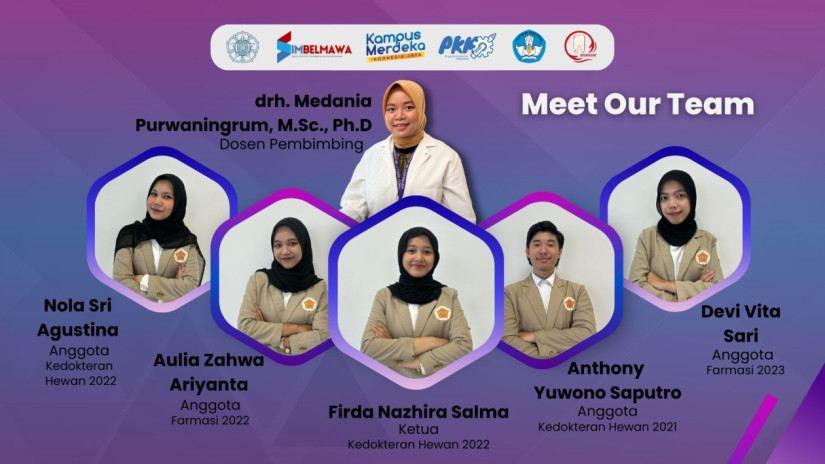
According to the International Diabetes Federation (IDF), the global number of diabetes mellitus (DM) patients is projected to reach 693 million by 2045.
For those with diabetes, wounds can be challenging to heal due to increased pro-inflammatory cytokines and proteases, which reduce growth factors, blood flow, and cell migration.
This can lead to diabetic wounds turning into ulcers, with diabetic patients having a 25% chance of developing diabetic ulcers and over 17% of these patients at risk of amputation and even death.
A team of students from Universitas Gadjah Mada (UGM) consisting of Firda Nazhira Salma, Nola Sri Agustina, Anthony Yuwono Saputro (all from the Faculty of Veterinary Medicine), and Aulia Zahwa Ariyanta and Devi Vita Sari (from the Faculty of Pharmacy) has successfully developed a secretome derived from the dental pulp stem cells (DPSCs) of horses.
This secretome has proangiogenic, immunomodulatory, and anti-inflammatory properties, which are expected to aid in the healing process of diabetic wounds.
“We conducted research using horse-derived secretome to explore its potential in healing diabetic wounds,” said Firda Nazhira Salma, the team leader, in a statement to the press on Wednesday, Aug. 14.
Salma explained that the secretome gel’s activity was tested on rat models under Dr. Medania Purwaningrum, a Faculty of Veterinary Medicine lecturer.
According to her, using horse DPSCs secretome for diabetic wound treatment could be more convenient if it were formulated into a topical preparation like gel.
“The gel provides a cooling effect on the skin, making it ideal for application on wounds,” she explained.
Their research findings revealed that a gel with a 30% effective volume (eV) concentration of horse DPSCs secretome showed the best potential for accelerating the healing of diabetic wounds in rat models.
Although the results were promising, further research is necessary to explore the gel’s autogenic and allogenic potential and determine its safe dosage and toxicity levels.
“As the prevalence of diabetes in Indonesia continues to rise, this research needs to be explored further,” she concluded.
Author: Bolivia
Editor: Gusti Grehenson

